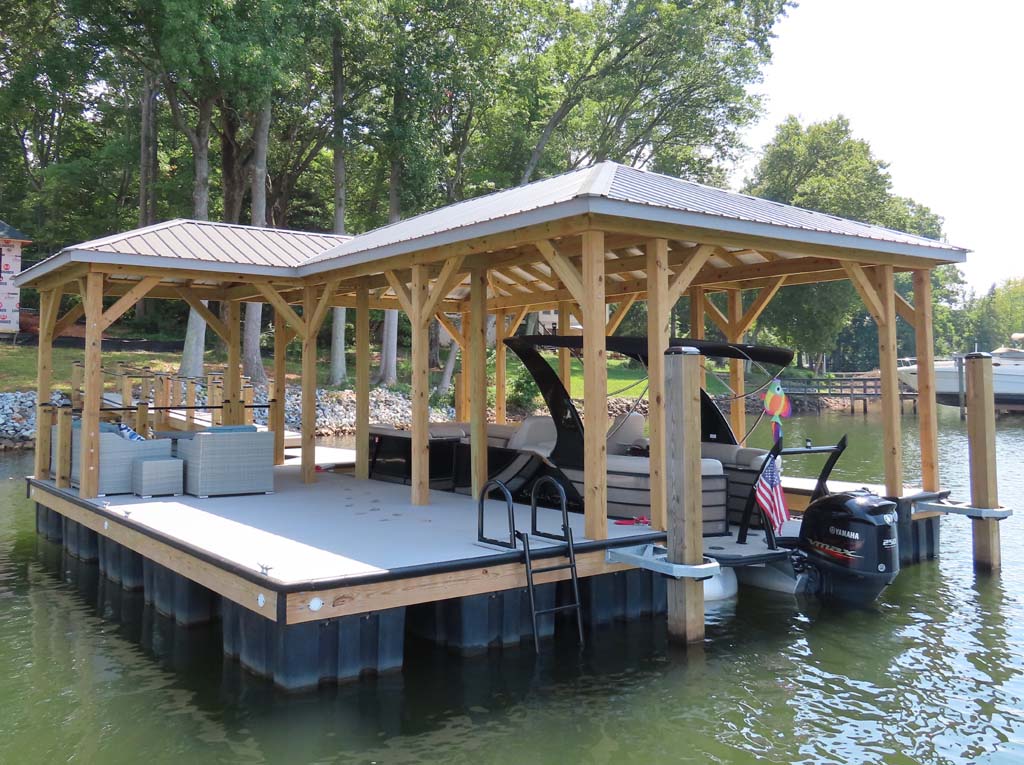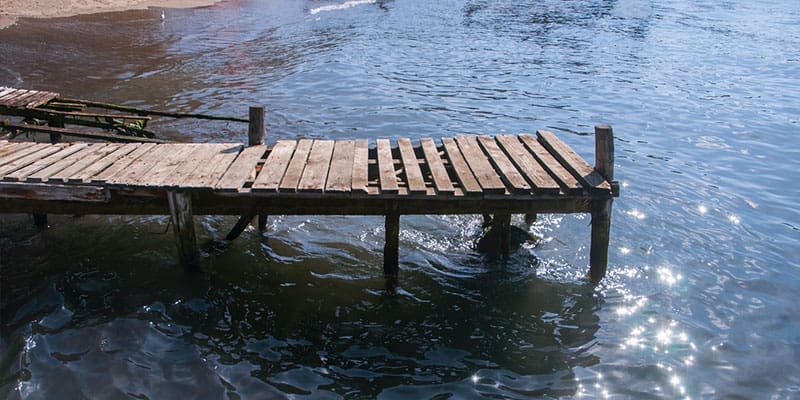Expert Insights on Lasting Dock Repairs Solutions
Expert Insights on Lasting Dock Repairs Solutions
Blog Article
Just How to Address Common Dock Repair Issues for Safe Water Tasks

Identifying Common Dock Issues
Determining typical dock concerns is important for keeping the capability and security of your waterside residential property. Normal examinations can aid discover problems prior to they come to be extreme, guaranteeing both the durability of the dock and the safety and security of those who use it.
Another usual trouble is the destruction of flotation devices. These tools are important for maintaining the dock buoyant, and any damages or slits can cause the dock to list or sink. On a regular basis looking for leaks or water logged drifts can preempt more significant problems.
Additionally, algae and barnacle buildup on the dock's surface can develop unsafe and hazardous problems. This biofouling not just presents a risk to individuals but can likewise speed up the wear and tear of the dock materials.
Last but not least, checking for indicators of rust on steel components is necessary. Rust can compromise the stability of the dock's framework, making it risky. By regularly identifying these common dock concerns, you can make certain that your dock continues to be safe and useful for years ahead.
Fixing Rotting Timber
When resolving the concern of rotting wood on your dock, it is critical to act promptly to stop further wear and tear. Begin by thoroughly checking the entire framework to recognize all influenced areas. Utilize a screwdriver to probe the wood; if it sinks in conveniently, the wood is likely decayed and needs prompt interest.
Once recognized, eliminate the decayed areas using a saw or chisel. Make sure to cut down to healthy and balanced, solid timber, ensuring you get rid of all jeopardized material. After removal, treat the staying timber with a timber chemical to avoid future rot. This treatment will certainly assist guard versus dampness, which is the main reason of wood degeneration.
Following, replace the removed sections with marine-grade lumber or pressure-treated wood, which are a lot more immune to water damage. Secure the brand-new pieces with galvanized or stainless-steel bolts to stop deterioration. Furthermore, applying a water resistant sealant to the brand-new timber can supply an added layer of defense.
Protecting Loosened Boards
How do you guarantee your dock continues to be risk-free and functional for all its users? One critical element is securing loosened boards, which can otherwise present significant hazards. Loose boards not just enhance the danger of tripping but can also endanger the architectural honesty of the whole dock.

For reinstallation, make use of stainless or galvanized steel screws, as these materials offer remarkable resistance to corrosion in marine settings. Guarantee the screws are long sufficient to permeate deep into the underlying assistance structure, yet not so long that they protrude with the dock's surface. Pre-drilling pilot openings can aid protect against the timber from splitting.
Last but not least, preserve a regular assessment schedule to recognize and attend to any kind of new concerns quickly. By safeguarding loosened boards efficiently, you add to the overall safety and security and durability of your dock, making it a trustworthy system for water activities.
Maintaining Unstable Pilings
Ensuring the stability of unstable pilings is critical to keeping a functional and risk-free dock. Unstable pilings can endanger the whole structure, presenting significant risks to users and potentially resulting in pricey repairs. The initial navigate to these guys step in stabilizing these important parts is a complete examination. Take a look at the pilings for indications of rot, damages, or shifting. Make use of a level to look for upright alignment and ensure they are driven deep sufficient right into the substratum to offer appropriate assistance.
If the pilings are located to be unstable, one reliable technique for reinforcement is using extra bracing. Cross-bracing with treated lumber or galvanized metal can significantly improve security. Anchor the braces safely to both the pilings and the dock structure to distribute tons uniformly.

Normal upkeep and periodic reassessment of the pilings' security are important to ensuring long-term dock safety and functionality.
Replacing Rusty Equipment
Dealing with unstable pilings is just one facet of keeping a dock's honesty; another critical concern is replacing rustic equipment. With time, exposure to wetness and salt can result in the oxidation and rust of braces, screws, and screws, endangering the entire structure's safety. Routine inspection for corrosion is important, particularly after extreme weather or seasonal modifications.
When rusty equipment is recognized, prompt activity is called for. Begin by choosing marine-grade stainless-steel or galvanized equipment, both created to resist the harsh aquatic setting. Ensure that you have the appropriate tools, such as wrenches and screwdrivers, to safely remove the old, rusty items without creating further damages to the dock.
After eliminating the corroded hardware, completely tidy the affected areas to remove any kind of recurring corrosion or particles. Use a rust-inhibiting guide to revealed steel surface areas before installing the brand-new equipment. Tighten all fixtures securely to avoid future helping to loosen, and occasionally evaluate the installations to guarantee ongoing security.
Replacing rustic equipment not only prolongs the dock's lifespan but additionally significantly improves the safety of water tasks. By proactively handling corrosion, you shield both the framework and look at more info its customers, guaranteeing a pleasurable and safe and secure waterfront experience.
Verdict
Normal inspections and maintenance are essential to address typical dock repair concerns and make certain risk-free water tasks. By recognizing and correcting problems such as decaying timber, loose boards, unsteady pilings, and corroded equipment, architectural stability and longevity can be considerably improved. The application of marine-grade products and ideal therapies additionally fortifies the dock versus ecological stressors. Such positive actions add click to investigate to the general safety and security and capability of dock structures, fostering a secure setting for water-based tasks.
Guaranteeing the security of water activities hinges substantially on the proper maintenance and repair service of anchors (Dock Repairs). These devices are crucial for maintaining the dock resilient, and any kind of damages or slits can trigger the dock to listing or sink. By regularly determining these usual dock concerns, you can ensure that your dock continues to be protected and functional for years to come
Guaranteeing the security of unstable pilings is paramount to maintaining a useful and secure dock.Regular inspections and maintenance are essential to deal with typical dock repair service issues and make certain risk-free water tasks.
Report this page